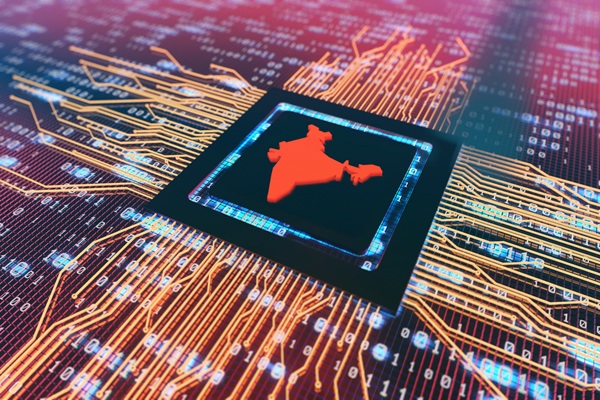.png)
The Real ‘Black Mirror’ And A Dystopian New World Order
From RBI’s high-stakes gambits to tariff wars and AI chaos, India’s week mirrors Black Mirror’s new season—each episode a parable of modern fragility.

Phynix is a seasoned journalist who revels in playful, unconventional narration, blending quirky storytelling with measured, precise editing. Her work embodies a dual mastery of creative flair and steadfast rigor.
April 13, 2025 at 4:21 AM IST
Dear Insighter,
Black Mirror’s seventh season, with Charlie Brooker’s haunting tales of technology’s double-edged sword, feels unnervingly familiar. Swap neural implants for monetary policy, AI clones for tariff tantrums, and you’ve got the world’s current narrative: a dystopian anthology where headlines blur with fiction. Let’s dissect this week’s episodes.
Episode 1: Common People — The RBI’s Life Support
Plot: A system keeps a patient alive—but at what cost?
The RBI has become the economy’s Rivermind—a life-support machine for an economy gasping under global shocks. Its toolkit this week included a 25-basis-point rate cut, a shift to an accommodative stance, and growth forecasts trimmed to 6.5%. But as Dhananjay Sinha argues, the central bank’s assumption that India is insulated from tariff wars is like trusting a beta version of mission-critical software. The US-China trade war isn’t just a bilateral feud; it’s a systemic contagion, threatening to crash global supply chains and depress India’s export elasticity.
Yet the RBI’s balancing act is surgical. It’s rewriting the FX playbook, allowing the rupee to float more freely amid dollar volatility, while capping gold loans at 1kg per borrower to curb speculative pledging. Behind the scenes, Manoj Rane writes, the RBI is quietly stabilising IndusInd Bank, a move Banker Emeritus critiques as opaque, warning that regulatory oversight risks becoming a “ritualistic checkbox” if RBI’s inspectors are not held accountable for persistent lapses.
Abheek Barua, meanwhile, likens the RBI’s tariff optimism to a pilot navigating turbulence with outdated instruments, but at least it picked the right fight, prioritising growth over inflation.
Episode 2: Bête Noire — The Tariff Blast From The Past
Plot: A computer geek invents world-altering tech, but uses it to settle old scores.
Enter Donald Trump, the spectre haunting global trade once again; this time, all guns blazing. His tariffs—145% on China, 26% on India (paused but looming)—aren’t economic strategy, they’re payback. Trump’s weapon of choice—a tool that could reshape the world—is twisted into a blunt instrument of retribution.
Michael Spence warns the US is “digitally isolating itself,” risking irrelevance in a multipolar world. Nancy Qian underscores the irony: tariffs designed to “punish” China will instead bleed US consumers.
China’s response—125% tariffs and state media broadcasting Mao-era defiance—adds layers to the drama, turning trade into ideological theater. As TK Arun explains, Trump may be bragging about foreign leaders "queuing up to kiss his ass", but China has refused this diplomatic choreography, declaring it "would not yield to blackmail.”
Yet, Ajay Srivastava argues, India could exploit this plotline by deepening supply-chain ties with Beijing, particularly in chemicals and electronics. But are these tariff wars just a symptom of a deeper decay?
Episode 3: Hotel Reverie — Trapped in GST’s Labyrinth
Plot: A star is trapped in a scripted dimension, desperate to escape.
Seven years post launch, India’s GST remains a virtual prison for businesses. Najib Shah, who oversaw its rollout, shares insider perspectives on the promises and pain points of India's tax system with Rajesh Mahapatra. Small businesses feel like actors trapped in a poorly coded simulation, forced to navigate bureaucratic glitches. The solution? A rewrite—fewer rates, tech-driven audits, and a centralised dispute mechanism—or risk eternal entrapment in a loop of inefficiency.
Episode 4: Plaything – AI’s Evolution & Tech’s Reckoning
Plot: One’s obsession with AI lifeforms spirals into self-destruction.
India’s tech sector is facing its AI reckoning. Krishnadevan V writes that legacy coders—once the backbone of India’s IT boom—are becoming obsolete, like floppy disks in a cloud-driven world. Companies now hunt for prompt engineers and AI ethicists, leaving traditional tech hubs feeling like abandoned arcades.
Meanwhile, Meghna Bal notes, Grok AI—an unfiltered chatbot integrated with social media—blurs the line between innovation and anarchy. Its ability to generate politically charged content risks destabilising elections and markets, raising existential questions: Should AI mirror humanity’s chaos, or be sandboxed like a dangerous game?
Episode 5: Eulogy – Nostalgia’s Bitter Aftertaste
Plot: Old memories resurface, blurring past and present.
India’s infrastructure debate is steeped in nostalgia for progress. Sharmila Chavaly compares botched roads and perpetual tolls to faded photographs—promises of modernity left unfulfilled. Public anger intensifies as projects face delays, turning voters into vigilantes. In an interview with Ranjana Chauhan, Chavaly dives deeper into the trust deficit between citizens and government regarding these projects.
In pharmaceuticals, Natco’s 99.9% drug price slash isn’t just disruption—it’s a eulogy for Big Pharma’s excess. By pricing a life-saving drug at ₹15,900 (down from ₹18 million), Natco challenges patent norms. Investors cheer, but the industry braces for a domino effect.
Episode 6: USS Callister: Into Infinity – Survival In A Fractured Universe
Plot: Stranded in a virtual abyss, survival demands unity.
India’s economy, like the USS Callister crew, navigates a fragmented universe. Trump’s tariffs, China’s resolve, and the RBI’s tightrope walk mirror a battle for relevance in a multipolar cosmos. BasisPoint Groupthink warns that remittances and IT exports—once hailed as saviors—are mere band-aids. The real cure? A manufacturing revival, streamlined trade pacts, and logistics overhauls.
R. Gurumurthy adds a cautionary subplot: over-regulation risks capsising banks, a phenomenon he dubs “Eastland syndrome.” The RBI’s gold loan caps and liquidity tweaks walk this tightrope—necessary safeguards, but potential growth inhibitors.
Post-Credits: A Moody Cliffhanger
As temperatures soar and dust storms cloak the capital in sepia, India’s economy mirrors the climate: volatile and unrelenting. Moody’s Analytics slashes growth forecasts by 30 bps, citing tariff headwinds. The CDX IG index surges, signaling investor panic. Yet, 10-minute delivery startups quietly electrify logistics, proving innovation thrives in adversity.
Growth isn’t about avoiding chaos—it’s about rewriting the code. Simplify GST. Forge real alliances. Adapt with AI. Or risk a system crash.
Until next week, binge-watching the horror show—aka the news feed—in dystopian dread.
Yours truly.
Phynix
P.S. If you survived this season, hydrate—and pray the sequel isn’t titled “The Biggest Market Crash.”
P.P.S. From The Canvas this week, Shivaram Subramaniam captures a metaphor for markets in decline: An ageing snow leopard drifting between hunger and history.



